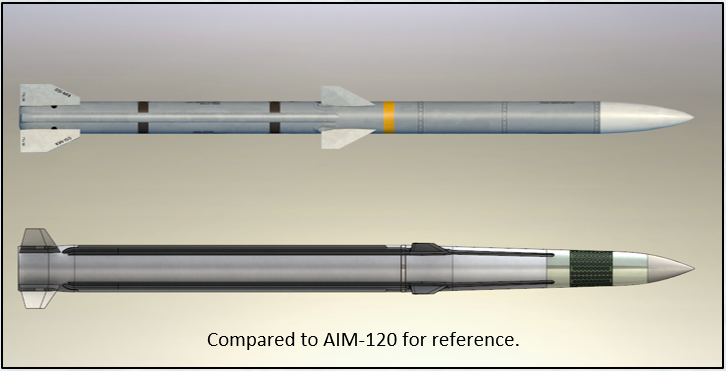Ovanstående baserar sig till stor del på en artikel i Washington Post, som jag hoppas inte är "rysk propaganda" - åtminstone inte denna gång:Business Insider skrev:Ukraine uses the US-provided M58 Mine Clearing Line Charge (MICLIC) systems, which Zaluzhny (Ukrainas ÖB, general Valery Zaluzhny, min anm.) said "are also being destroyed," per The Post.
"There's nothing wrong with that. It takes a lot of them," he added.
US officials said Washington is looking to provide more of the system and the charges it uses, per The Post.
Ukrainian forces are trying to save their few mine-clearing systems by manually clearing mines instead, often using small teams of soldiers that crawl on the ground and try to spot mines themselves, per The Post.
Russian forces also continue to drop more mines from the air onto areas that Ukrainians have cleared, further complicating Ukraine's clearance efforts.
Ukrainian soldiers told The Post that the long buildup to the counteroffensive gave Russians time to fortify their defenses, allowing them to densely mine areas three and 10 miles deep in front of its key strongholds.
The minefields are posing major problems along the southern Zaporizhzhia front line. Russia had expected Ukraine to attack the area and attempt to cut off a stretch of land that links to Crimea, a region Russia illegally annexed in 2014.
The biggest obstacle to Ukraine’s counteroffensive? Minefields.
Såhär får det inte gå till, och det var exakt det jag varnade förWashington Post skrev:Another officer in the 47th brigade said that on the counteroffensive’s first day, some of the brigade’s units, riding in Bradley fighting vehicles and Leopard battle tanks, mistakenly took a wrong route, into a minefield, instead of one that had been prepared by sappers in advance.
Obstacle-clearing vehicles were at the front of the columns, but the group was forced to stop when vehicles in the rear unexpectedly ran into mines and got trapped. The chaos created a cluster of vehicles in one spot. The Russians then started to attack the Ukrainians from helicopters overhead and with antitank missiles, badly damaging or destroying several of the personnel carriers and tanks. Some units that left their equipment behind still managed to seize Russian trench positions, according to the Ukrainian officer.
dr Cassandra Nojdh skrev: ↑torsdag 20 april 2023 19:56 Ryssarna har lärt sig av det och kommer att i sina försvarslinjer försöka fånga in och stoppa upp ev. anfallskolonner och försöka förinta dem med artilleri. I Kherson behövde Ukraina inte konfrontera ryssarna fortifierade försvarslinjer, eftersom de kunde tvinga dem till reträtt genom att strypa deras försörjningslinjer över Dnepr. I Kharkiv var de ryska försvarslinjerna för glest bemannade och för dåligt fortfifierade, vilket gjorde att Ukrainas armé kunde vräka ryssarna över ända, men ungefär vid gränsen mot Luhansk oblast tog anfallskraften slut.
De ukrainska anfallsstyrkorna kommer att vara helt beroende av sitt markbaserade luftvärn för sitt flygskydd. Sviktar detta kommer VKS att sätta in allt vad de har av korträckviddiga attackvapen, som ex.vis Kh-29, Kh-36, Kh-59 eller UPAB-1500 (den sistnämnda är en tung glidflygbomb) för att bekämpa framför allt de ukrainska ingenjörsfordonen när dessa försöker forcera div. slagfälthinder. Lyckas man med det och kan stoppa upp anfallsrörelsen kan det ryska artilleriet sedan göra jobbet klart enligt ovan.
Ovanstående visar att det inte bara handlar om minröjning. Löser man inte problemen med fientliga minor, artilleri och attackflyg samtidigt så går det inte att genomföra en mekaniserad framryckning, och man hänvisad till patrullstrider med infanteri, ungefär som under WW1. Ukraina står faktiskt inför samma dilemma som den tyska armén inför våroffensiven 1918. Den tyske gnereralstabschefen Erich Ludendorff chansade och kommenderade "framåt" ändå, men i slutänden förlorade tyskarna för mycket personal. Det misstaget kan och får inte Ukraina göra.Washington Post skrev:“When the enemy sees even a Leopard tank in front of him and special engineering equipment, he will destroy the special equipment first,” he said. “Because without it, all the others will not pass. And in just a couple of days of the offensive, several such vehicles were destroyed along with their crews.”
Because the Russians have drones in the sky on the lookout for any mine-clearance systems to target with artillery and missiles, the Ukrainians are trying for now to save the few they do have by doing the job manually. Sapper units — sometimes a group of just four people — will often wait for twilight to clear paths, as they are too visible in the daylight and can be seen through night-vision devices in the dark.
Walking with a metal detector is unrealistic, sappers said, because they are too visible. So they crawl, relying on their vision to spot mines.
“It slows us down a lot, because the work of a sapper, it needs time and tranquility,” said Lt. Col. Mykola Moroz, the commander of the 128th Mountain Assault Brigade’s engineering and sapper battalion. “It’s not possible to do our work in these circumstances.”
Även Ukrainska Pravda tar upp detta tema:
Minefields are biggest obstacle to Ukrainian counter-offensive





